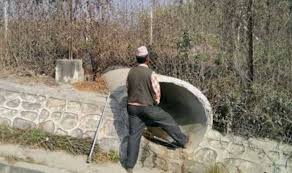
Dhyani Buddhas:
If you have ever visited Kathmandu Valley every chaitya with five Dhyani buddhas are so numerous, that every street and courtyard in Kathmandu Valley has one of them, at least. These Dhyani Buddhas are also depicted in Mandala or chaityas
Chaitya

A chaitya refers to a shrine, sanctuary, temple, or prayer hall in many Buddhist site mostly around capital city of Kathmandu in Nepal. The term is most commonly used to refer a space within a stupa and is a rounded sculpture at the end opposite of an entrance. It usually bears a high roof on the top guarding the sculpture.
These Dhyani Buddhas are also depicted in Mandala paintings.
Mandala

A mandala, which is a Sanskrit term for a “circle” or “discoid object,” is a geometrical design that holds a great deal of symbolism in Hindu and Buddhist cultures. In their most basic form, mandalas are circles contained within a square and arranged into sections that are all organized around a single, central point
Five Dhyani Buddhas
1-Akshobya(East)

Akshobhya, Buddha is a principal buddha within Vajrayana Buddhism associated with the eastern quarter of a mandala, a minor buddha within the sutra tradition of Mahayana Buddhism, residing in the Abhirati buddha field.
Akshobhya, meaning unshakeable, is one of many Buddhas found in Mahayana and Vajrayana Buddhism. He is described in the Mahayana Sutras of Northern Buddhism and in the Tantra literature. Although a relatively minor figure in the Sutras Akshobhya is of major importance in the Tantras occupying a central role in Vajrayana Buddhism at all levels. He is easily recognized in paintings by having a Buddha-like form, blue body colour, and the left hand supporting an upright vajra scepter. There are no other Buddhist figures which has a similar iconographic appearance. Tantric depictions of Buddhas are commonly shown with jewel ornaments with different colours and a crown.
In Nepal, Virochana which is the center of the mandala is not shown in chaityas but is shown in mandalas.
2-Ratnasambhava(South)

Ratnasambhava, Buddha is a principal buddha within Vajrayana Buddhism which represents the qualities of enlightenment. It lies within the southern quarter of a mandala, residing in the Ratnakuta buddha field.
Ratnasambhava is primarily associated with Vajrayana Buddhism and originates in the Tantric Literature of the Charya, Yoga, and Anuttarayoga Tantra classes. He is most commonly depicted in the set of the Five Symbolic Buddhas.
There are two main types of Ratnasambhava:
– Buddha Appearance (nirmanakaya)
– Peaceful Appearance (sambhogakaya)
3-Amitaba(West)

Amitabha Buddha below is a secondary figure in mandalas. All of the forms of Amitabha have a peaceful deity appearance with long hair, jewels, and heavenly garments. In most cases, he appears red in color.
Also referred as Amitayus, the Buddha of Eternal Life, Amitabha is one of the five Cosmic Buddhas of Esoteric Buddhism. He is shown in paradise, Sukhavati, the Western Pure Land, enthroned beneath a flowering tree festooned with strands of jewels and auspicious symbols. On the both side the sky is filled with throngs of ecstatic demigods who bear offerings and scattered flowers. Seated below are the eight great bodhisattvas, and between them are two large, low tables covered with offerings. To either side are the vast assembled audiences who receive Amitayus’s message. At the bottom, set within a vast panoramic landscape, are courtyards, giant lotus flowers, and pools from which the purified are being reborn.
4-Amoghasiddhi(North)

Amoghasiddhi Buddha is the fourth Buddha of the Five Families of Transcendent, or Symbolic, Buddhas, residing in the Karma Paripurana ( complete ) buddha field.
here are two main types of Amoghasiddhi iconography:
– Buddha Appearance Amoghasiddhi (Nirmanakaya)
– Peaceful Appearance Amoghasiddhi (Sambhogakaya)
Amoghasiddhi is associated with Vajrayana Buddhism and originates in the Tantric Literature of the Charya, Yoga and Anuttarayoga Tantra classes. The sculptural images generally fall into two groups, either as Buddhas with monastic robes and without ornaments known as nirmanakaya appearance or Buddhas in Bodhisattva Appearance, also known as peaceful appearance, with crowns and ornaments – sambhogakaya appearance.
5- Vairochana (Centre)

Dhyani Buddha known as the Vairochana Buddha symbolizes the element of ‘rupa’, or shape or form. He is represented in a white colour and not usually depicted in the Chaiyas. He is usually found meditating on a lotus seat, teaching the Dharma (law) and, in this way, combatting ignorance from the world.
SPIRITUAL GROWTH
The concept of the Five Dhyani Buddhas is one of the most important philosophies that evolved in the Buddhist monasteries of Vajrayana . The idea can seem a bit confusing at first but, at its core, it is a roadmap for spiritual growth.
The Vajrayana philosophy of Buddhism conceived the idea that the world is composed of five cosmic elements and they are symbolised by these Dhyani Buddhas. Unlike historical figures like Gautama Buddha, these are transcendent beings who represent intangible forces and divine principles.

The reason they are important is they can act as spiritual guides to help people face the negative forces on the path to enlightenment. Meditating on the Five Dhyani Buddhas and what they represent can be a tool to learn self-restraint, in order to avoid self-indulgence and self-denial.
One of the reasons that this concept of polytheism was developed around Paharpur was because it was needed to compete with the Brahmanical religion that was also being practised in the region at the time. At its core, there are similarities with the Tantrism of the Shaiva and the Shakti cult in Bengal.
Finding a spiritual and intangible way to meditate on self-restraint was also a factor in the development of the Five Dhyani Buddhas. Buddhist monks at the time had a rigorous daily routine and would usually only have one meagre meal a day that they earned by begging in the neighbourhood. The rest of the day was spent studying, teaching, and meditating.
Although the idea of the five elements was metaphysical, there was a desire to be able to represent it in art and architecture. At Somapura Mahavihara at Paharpur, the central temple demonstrated a way to embody the Five Dhyani Buddhas. Four of them would have been placed facing the four cardinal directions and one would have been in the centre of the shrine. Each the Dhyani Buddhas were sitting on a lotus, had one face and two hands, and were wearing an image of their clan on their crown.
Everything happens for a reason,don’t question it,trust it-Buddha







